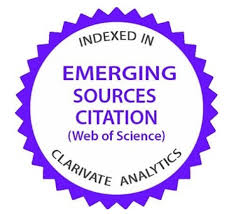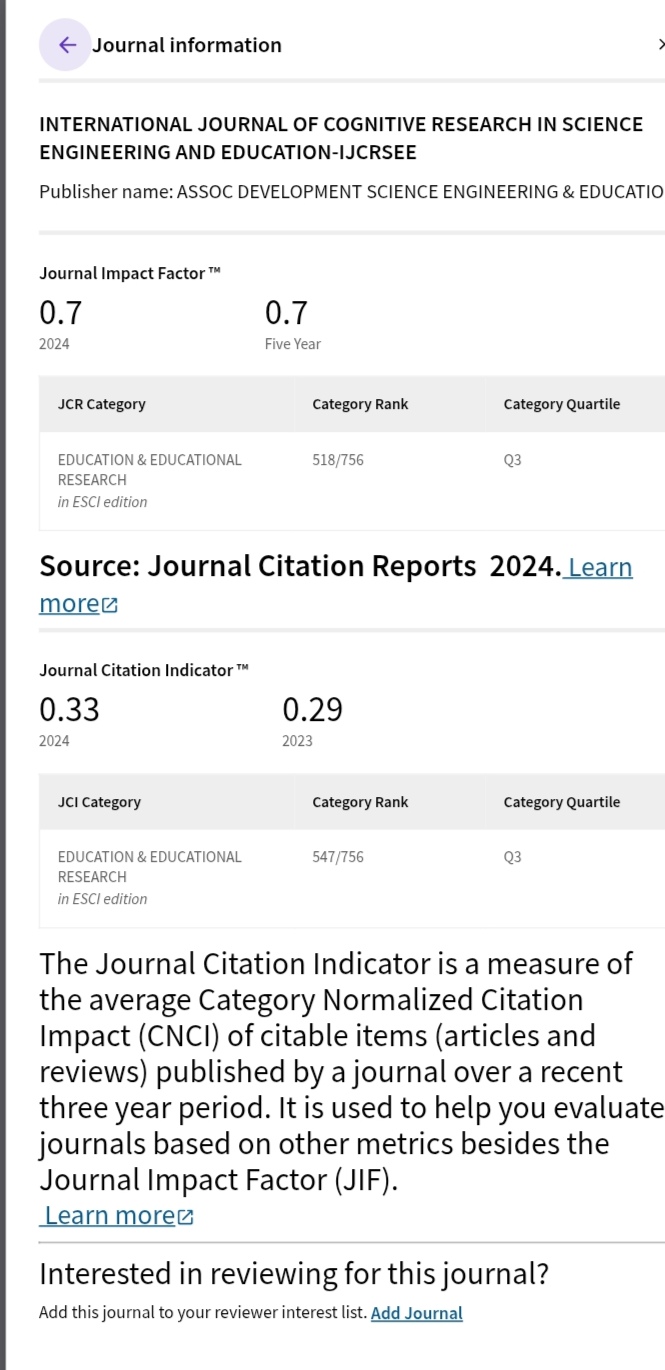ECONOMIC IMPLICATIONS OF EDUCATION IN SOUTHEAST EUROPE
DOI:
https://doi.org/10.5937/IJCRSEE2002059PKeywords:
Education system, institutions, budget, Southeast Europe, Economic growth, GDPAbstract
This research covers an evaluation of the impact of education system, educational, scientific and other institutions on the economic growth in nine countries of Southeast Europe (SEE). The main hypothesis is the following: GDP pc growth is significant and positively correlates with the indicators of the state of education system. In addition to educational institutions, there are other social and economic indicators on which education and science depend, namely the budget and fiscal system, corruption and protection of intellectual property rights, which also have positive and significant impact on GDP pc. The stated fields are interactive. Besides GDP pc, the analysis includes another 11 variables. Factor analysis for the variables grouped into two factors shows high significance. The F-test result shows significance of the regression model. ANOVA test, too, confirms the aforementioned significance. Both variables (the first and second factor) have positive direction with GDP pc. The results show significance of the institutional-educational variable, while the impact of educational population in the model is not sufficiently significant. Econometric analysis has mainly confirmed the initial hypotheses.
Downloads
References
Astakhova, K. V., Korobeev, A. I., Prokhorova, V. V., Kolupaev, A. A., Vorotnoy, M. V., & Kucheryavaya, E. R. (2016). The role of education in economic and social development of the country. International Review of Management and Marketing, 6(1S). Available at: https://www.econjournals.com/index.php/irmm/article/view/1865/pdf
Benos, N. (2010). Education policy, growth and welfare. Education Economics, 18(1), 33-47. https://doi.org/10.1080/09645290802500263
Bouhajeb, M., Mefteh, H., & Ammar, R. B. (2018). Higher education and economic growth: the importance of innovation. Atlantic Review of Economics: Revista Atlántica de Economía, 1(2), 4. Available at: http://aroec.org/ojs/index.php/ARoEc/article/view/58
David, H., Goldin, C., & Katz, L. F. (2020). Extending the Race between Education and Technology. NBER Working Paper, (w26705). https://doi.org/10.3386/w26705
Gouveia, S., & Santos, M. (2018). Export Performance of Southeastern European Countries. In Economy, Finance and Business in Southeastern and Central Europe (pp. 195-211). Springer, Cham. https://doi.org/10.1007/978-3-319-70377-0_14
Hanushek, E. A. (2016). Will more higher education improve economic growth?. Oxford Review of Economic Policy, 32(4), 538-552. https://doi.org/10.1093/oxrep/grw025
Hanushek, E. A., & Woessmann, L. (2020a). Education, knowledge capital, and economic growth. In The Economics of Education (pp. 171-182). Academic Press. https://doi.org/10.1016/B978-0-12-815391-8.00014-8
Hanushek, E. A., & Woessmann, L. (2020b). A quantitative look at the economic impact of the European Union’s educational goals. Education Economics, 1-20. https://doi.org/10.1080/09645292.2020.1719980
Kochetkov, D. M., Larionova, V. A., & Vukovic, D. B. (2017). Entrepreneurial capacity of universities and its impact on regional economic growth. Economy of Region/Ekonomika Regiona, 13(2), 477-488 https://doi.org/10.17059/2017-2-13
Lilles, A., & Rõigas, K. (2017). How higher education institutions contribute to the growth in regions of Europe?. Studies in Higher Education, 42(1), 65-78. https://doi.org/10.1080/03075079.2015.1034264
Milićević, S., & Petrović, J. (2018). Human resources in the function of European Union competitiveness as tourism destination. BizInfo (Blace) Journal of Economics, Management and Informatics, 9(2), 53-63. https://doi.org/10.5937/bizinfo1802053M
Nistor, S., Mera, V. I., & Pop Silaghi, M. I. (2018). Is education important in assessing the impact of institutions on economic growth in emerging economies?. Applied Economics, 50(34-35), 3840-3854. https://doi.org/10.1080/00036846.2018.1436149
Petrović, J., Milićević, S., & Djeri, L. (2017). The information and communications technology as a factor of destination competitiveness in transition countries in European Union. Tourism Economics, 23(6), 1353-1361. https://doi.org/10.1177/1354816616653529
Popović, G., & Erić, O. (2018). Economic development of the Western Balkans and European Union investments. Economic research-Ekonomska istraživanja, 31(1), 1539-1556. https://doi.org/10.1080/1331677X.2018.1498009
Popović, G., Erić, O., Stanić, S. & Krajišnik, M. (2019). Education, technological changes and economic development of Bosnia and Herzegovina, International Journal of Cognitive Research in Science, Engineering and Education (IJCRSEE), 7(2), 77-86. https://doi.org/10.5937/IJCRSEE1902077P
Saviotti, P. P., Pyka, A., & Jun, B. (2016). Education, structural change and economic development. Structural Change and Economic Dynamics, 38, 55-68. https://doi.org/10.1016/j.strueco.2016.04.002
Simionescu, M., Ciuiu, D., Bilan, Y., & Strielkowski, W. (2016). GDP and net migration in some eastern and south-eastern countries of Europe. A panel data and Bayesian approach. Montenegrin Journal of Economics, 12(2), 161-175. https://doi.org/10.14254/1800-5845.2016/12-2.10
Stock, J. H., & Watson, M. W. (1998). Median unbiased estimation of coefficient variance in a time-varying parameter model. Journal of the American Statistical Association, 93(441), 349-358. https://doi.org/10.1080/01621459.1998.10474116
Stock, J. H., & Watson, M. W. (2002). Macroeconomic forecasting using diffusion indexes. Journal of Business & Economic Statistics, 20(2), 147-162. https://doi.org/10.1198/073500102317351921
Tache, I., Bratucu, G., Chitu, I. B., & Dovleac, L. (2017). Improving the relationship between higher education institutions and business environment in South-Eastern Europe: a case study. International Journal of Economics and Business Administration, 5(2), 3-13. Available at: https://www.um.edu.mt/library/oar/handle/123456789/43214
Vidal, R., Ma, Y., & Sastry, S. S. (2016). Principal component analysis. In Generalized principal component analysis (pp. 25-62). Springer, New York, NY. https://doi.org/10.1007/978-0-387-87811-9_2
Visvizi, A., Lytras, M. D., & Daniela, L. (2018). Education, innovation and the prospect of sustainable growth and development. In The future of innovation and technology in education: Policies and practices for teaching and learning excellence. Emerald Publishing Limited, pp. 297-305. https://doi.org/10.1108/978-1-78756-555-520181015
Vuković, D. B., Shpak, N. A., Radovanović, M. M., Portugal Duarte, A., & Radulović, D. (2015). The role of human resources on the economy: a study of the balkan EU member states. Journal of the Geographical Institute ‘Jovan Cvijic ‘SASA, 65(2). pp.253–268. https://doi.org/10.2298/IJGI1502123V
World Economic Forum (2020). The global competi¬tiveness reports 2019. World Economic Forum Geneva. Retrieved from: http://www3.weforum.org/docs/WEF_TheGlobalCompetitivenessReport2019.pdf
Published
How to Cite
Issue
Section
License
Copyright (c) 2020 by the authors

This work is licensed under a Creative Commons Attribution 4.0 International License.











